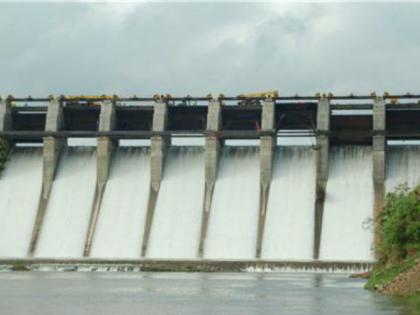Nashik Water Crisis: Dam Levels Drop to 33% as Heatwave Grips District
By Chitra Rajguru | Updated: April 30, 2025 18:22 IST2025-04-30T18:22:24+5:302025-04-30T18:22:24+5:30
As temperatures continue to soar across Nashik district, the water stock in local dams is rapidly declining. Currently, the ...

Nashik Water Crisis: Dam Levels Drop to 33% as Heatwave Grips District
As temperatures continue to soar across Nashik district, the water stock in local dams is rapidly declining. Currently, the district’s 24 dams together hold only 22,750 million cubic feet (mcft) of water—just 33% of their total capacity.
The Manikpunj dam has completely dried up, while eight other dams have dropped below the 20% mark and are expected to run dry soon if no rainfall is received. This situation is concerning, especially since the district had received satisfactory rainfall during last year’s monsoon, filling most dams and reservoirs.
Initially, authorities believed that there would be no severe water shortage this summer. However, since March, rising temperatures have increased water consumption and evaporation rates, worsening the crisis.
April has recorded some of the highest temperatures this season, with the mercury crossing 40°C on several days and heatwave conditions persisting. While dam levels are 10% higher than last year at the same time, the situation remains delicate, especially with months of summer still ahead.
Gangapur Dam, the main source of water for Nashik city, currently has 3,136 mcft (55%) water stock. Last year at this time, it had 41%.
Other dams like Kashyapi have 1,391 mcft (75%), Punad 927 mcft (56%), Mukne 3,351 mcft (46%), and Valdevi 514 mcft (45%).
In contrast, Gautami Godavari has just 172 mcft (9%), Alandi 187 mcft (22%), and Girna, the largest dam, holds 5,346 mcft (28%).
Last year, Nashik Municipal Corporation had proposed water cuts due to low levels in Gangapur Dam, but the decision was stalled due to political resistance during election season. This year, with 14% more storage in Gangapur than last year, officials believe water cuts may not be necessary yet.
Still, with eight dams nearing depletion and intense summer conditions ahead, the administration remains on alert, and water management will be critical in the coming weeks.